By Stephen Wasmund and Amy Andrews — You were likely in search of something when you picked up this issue (Winter 2023-24) of Cycling West. Information or maybe just entertainment. Presumably you’re a cyclist, or keen on becoming one, whatever your definition of ‘cyclist’ might be. Whether a racer, tourer, cyclomuter (bike commuter), or simply one who rides a bicycle, you immediately start searching for the ‘next’ … the next mountain biking destination, next exciting road race, or better cyclomuting route to work; the next level of fitness; lighter or blingier racing parts; a next bike; a next type of bike; next horizons. Eventually your search leads to the next big challenge, and often after that, to reason.
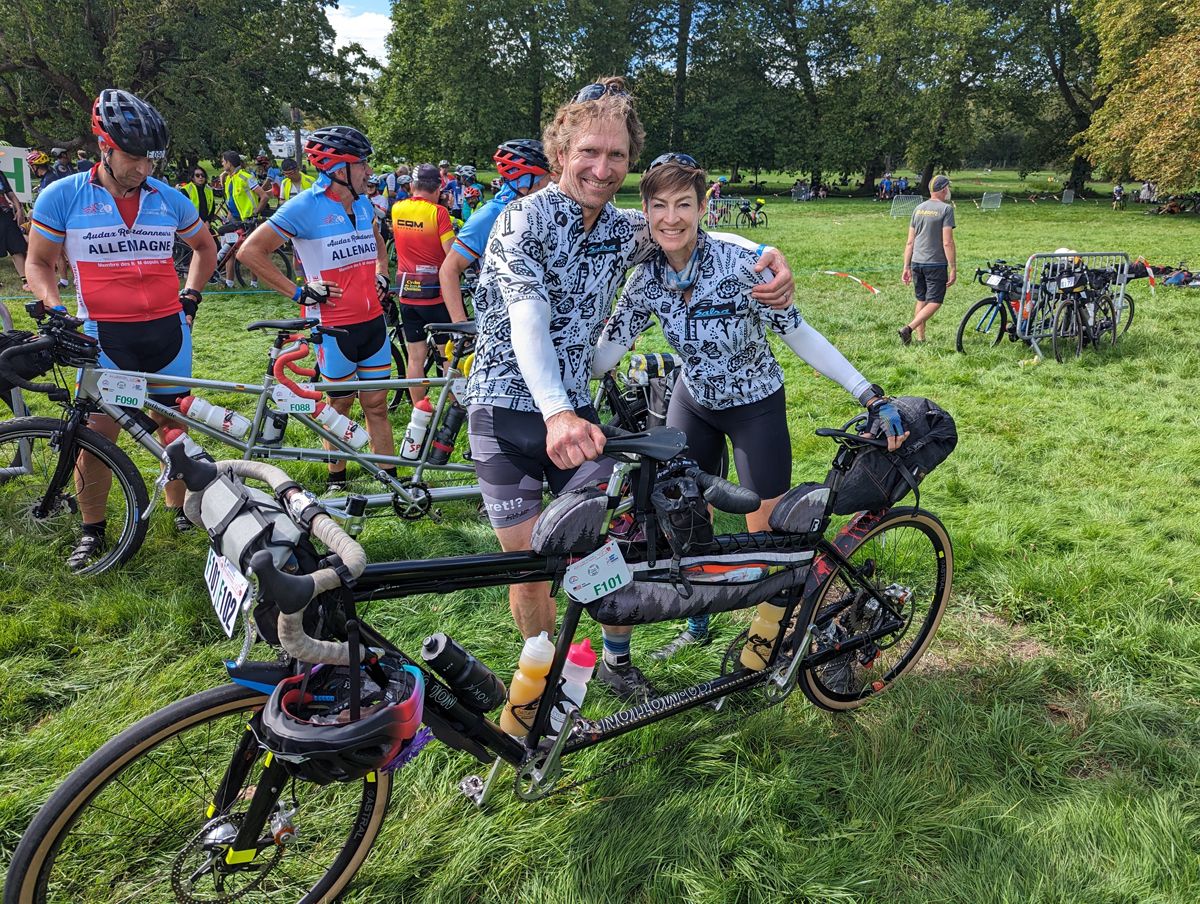
Paris-Brest-Paris is one of the ultimate bookstores in that search. Once one has decided to take on this event, the list of ‘nexts’ starts growing rapidly. The 1200 km ride across northwestern France is most likely a new destination. Even if you’ve been there before, most cyclists visiting France will head for the mountains! I suspect it’s uncommon to voluntarily vacation in the ‘Wisconsin of France’. In addition to the new destination, a big brevet on the other side of the ocean provides endless opportunity for new equipment. I don’t care how much cycling equipment you have, an event like this will require something new. There is definitely a physical challenge in pedaling the 300-600km (180-370 miles) a day, over the course of 4, 3, or for some really fast folks just 2 sunrises. This challenge is tracked closely by the search for the reason so many people have been participating in this historic event for well over 100 years. Amy and I are far enough into our cycling quest to appreciate that search for reason.
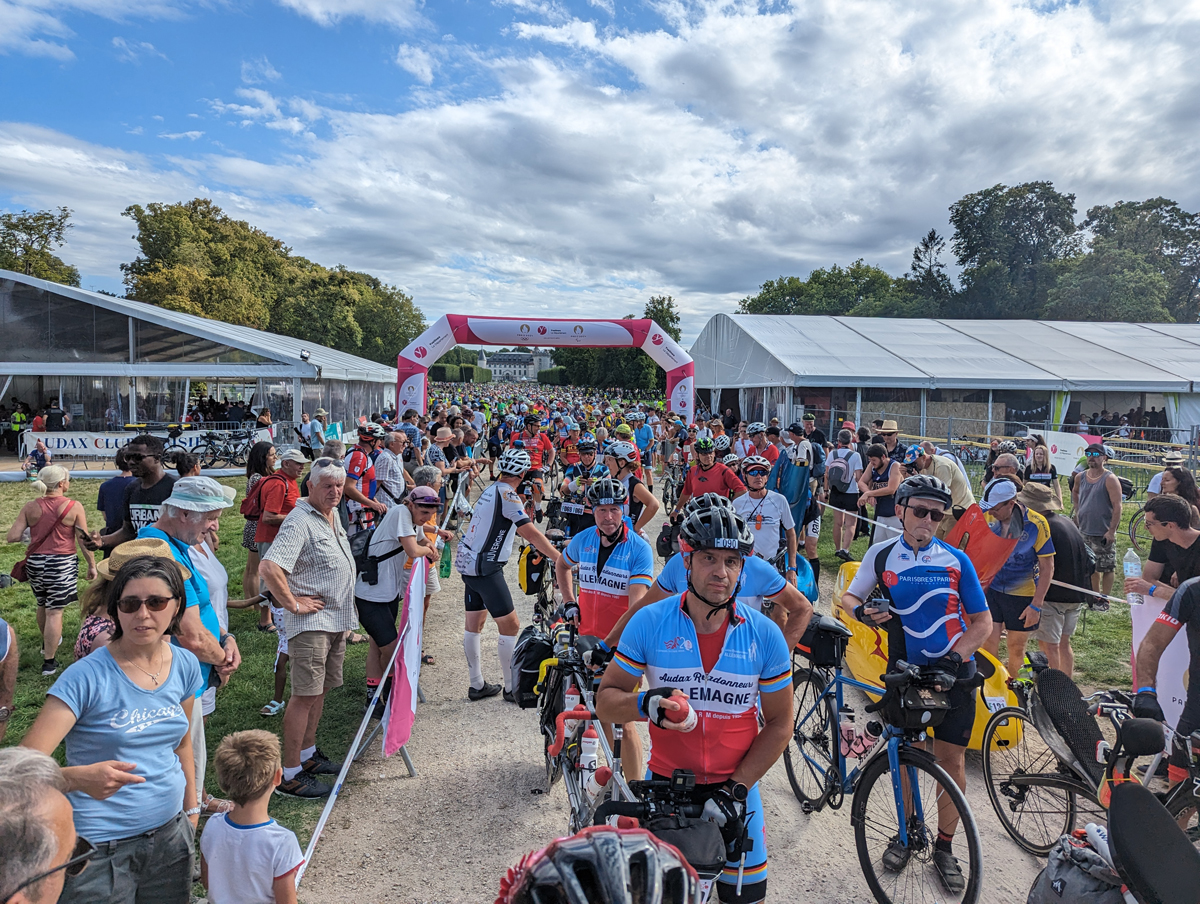
Our search begins on Sunday at 5:15pm. The most ambitious riders have been heading out in waves at 15-minute intervals since 4pm. Their time cut-off is 80 hours! The waves of ‘90-hour riders’ start at 5:15 and will continue into the night. The waves will begin again early Monday morning for riders who don’t want to start their epic ride into the night after a long and restless day of trying to prepare. These riders trade a morning start for a time limit of 84 hours. This means thousands of cyclists are spread across western France for the next few days.
There was always someone to pass, always someone passing you, and always someone to ride with if you desire, and often someone riding towards you, as the route is, for the most part, out and back.
Our 5:15 ‘F wave’ is for ‘Special Bikes’ including tandems, triplets, tricycles, recumbents, and velomobiles (there are restrictions, but basically anything human powered, with 2 or 3 wheels, which can be steered with a handlebar). ‘Special Bikes’ are special in part because their rhythm is a bit different than standard solo bikes. A bit harder to get going, a bit harder to slow, pretty fast going downhill, and a bit slower climbing. The wild velomobiles are even more special in that regard. They can pass you like an owl in a low dark canopy of trees. Imagine a barely audible ‘whooosh’, with nothing to see, because they’re only 24 inches above the ground. They climb like sloths. So, starting a long ride with a bunch of nervous energy and a bunch of special bikes is an adventure. We didn’t have any mishaps but did spend a lot of that nervous energy chasing the sunset with several other tandems and continually leapfrogging the swooping and very slow climbing velomobiles. Unlike any riding we’d ever done. Unlike any roads we’d ever traversed. Unlike any challenge we’d ever undertaken. The search begins.
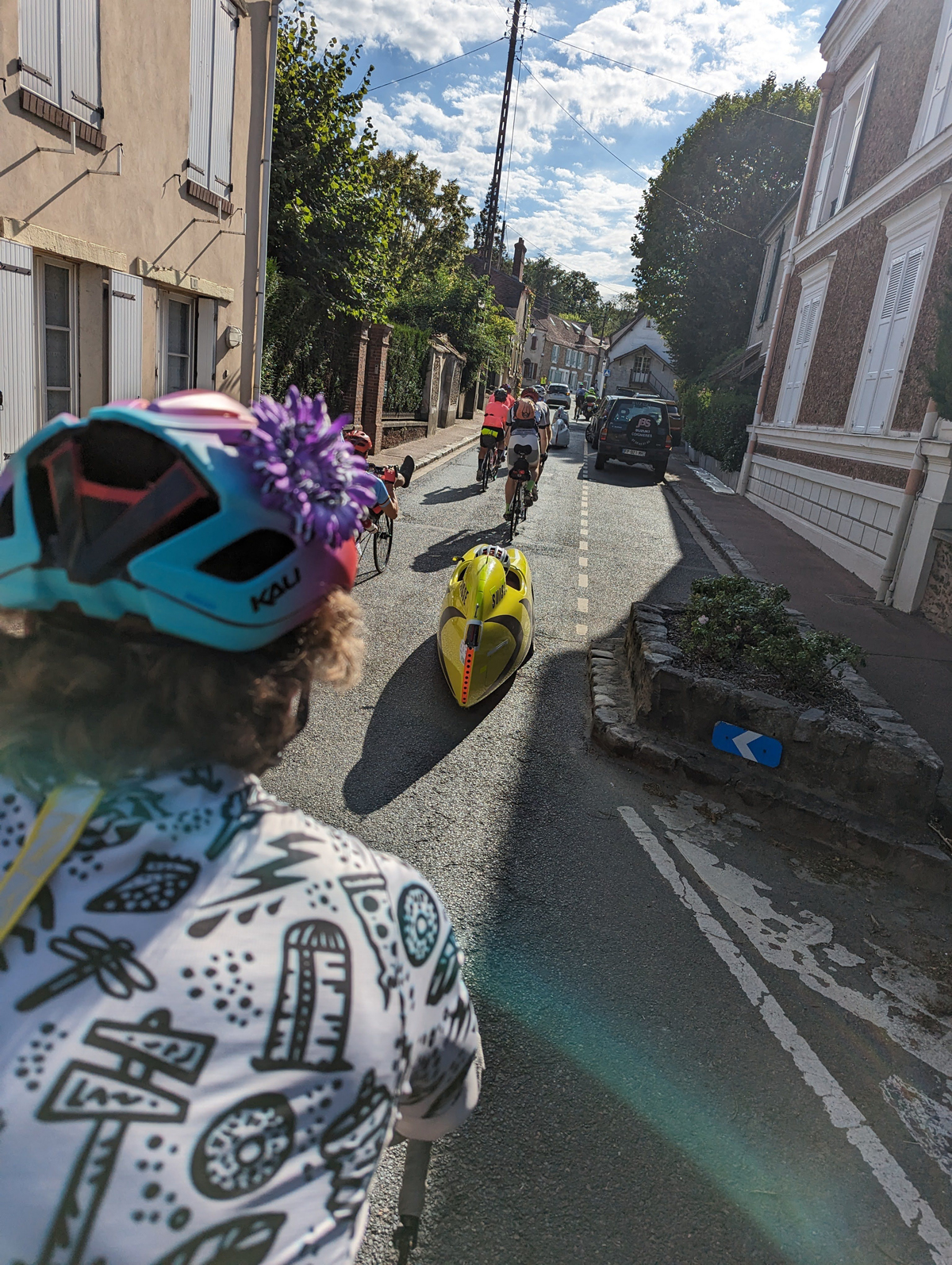
Moments
Italian Pack Riding
On Monday afternoon we were schooled in Italian pack riding. We’d been cruising along by ourselves and slowly rolled up on a pack of 8 older Italian gentlemen. I didn’t quite want to expend the physical energy to pass them quickly and ride off, nor pull slowly to the front, have them slide into our slipstream and then expend the mental energy required to be a good engine (a tandem’s lot in life). So, we eased off a bit and started cruising about 10 meters behind them to catch a little break.
I think the captain of the Italian pack started talking about us. This is based on repeated looks over shoulders, foreign words spoken, and my guilty conscience. We eventually decided to be good citizens and rolled by smoothly on the gauche (left) leaving easy opportunity to hop on our wheel if they wanted to continue at our pace. The captain promptly came around, got right in front of us, slowed slightly, said more Italian words, and proceeded to pull us up the gentle climb at a very controlled pace all the while looking in his bar-end mirrors making sure we didn’t drop any of his pack.
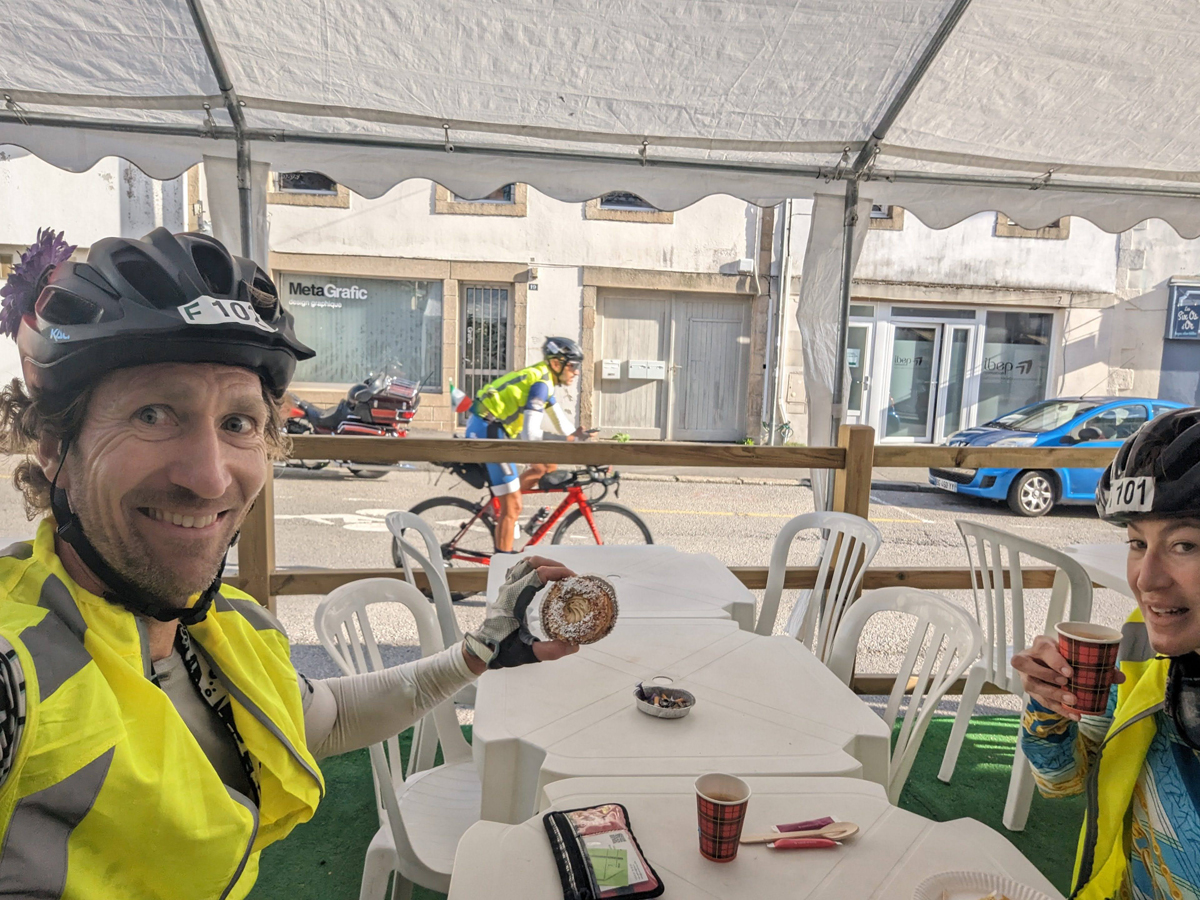
When the road turned downward the captain pulled off and let gravity have its way with us while leaving a large slipstream. Their entire pack tucked expertly into that draft and followed us across the next valley. When we started up the next hill, he promptly pulled back in front of us and kept us in check until the next downhill. This continued for the next few miles until the control point in Carhaix. I felt both wrapped on the knuckles, and greatly honored.
Crêpes
We were in search of the famous crêpes. You can survive PBP only buying food and hydration at the official Control Points, but we’d been advised by local PBP veteran Ken Moss that we needed to get a crêpe from this one particular family who handed them out freely in exchange for a postcard sent from the rider’s hometown. We’d forgotten which town the famous crêpe stand was located, so ended up stopping at several stands along the way and paying 1€ for a fine crêpe, but it wasn’t THE crêpe.
It wasn’t until about 12:30am Wednesday that we were peacefully cruising along when we see a couple folks sitting in lawn chairs at an awning covered folding table in front of a house just off the road, chatting, sipping coffee, and eating something. We decided a quick break was in order, so I hop off and inquire about their wares.
Crêpes! I’ll take one. When they ask what topping I want I give my standard answer of, “I’d like the topping that you like.” It’s usually fraise (strawberry) jam which is fine with me.
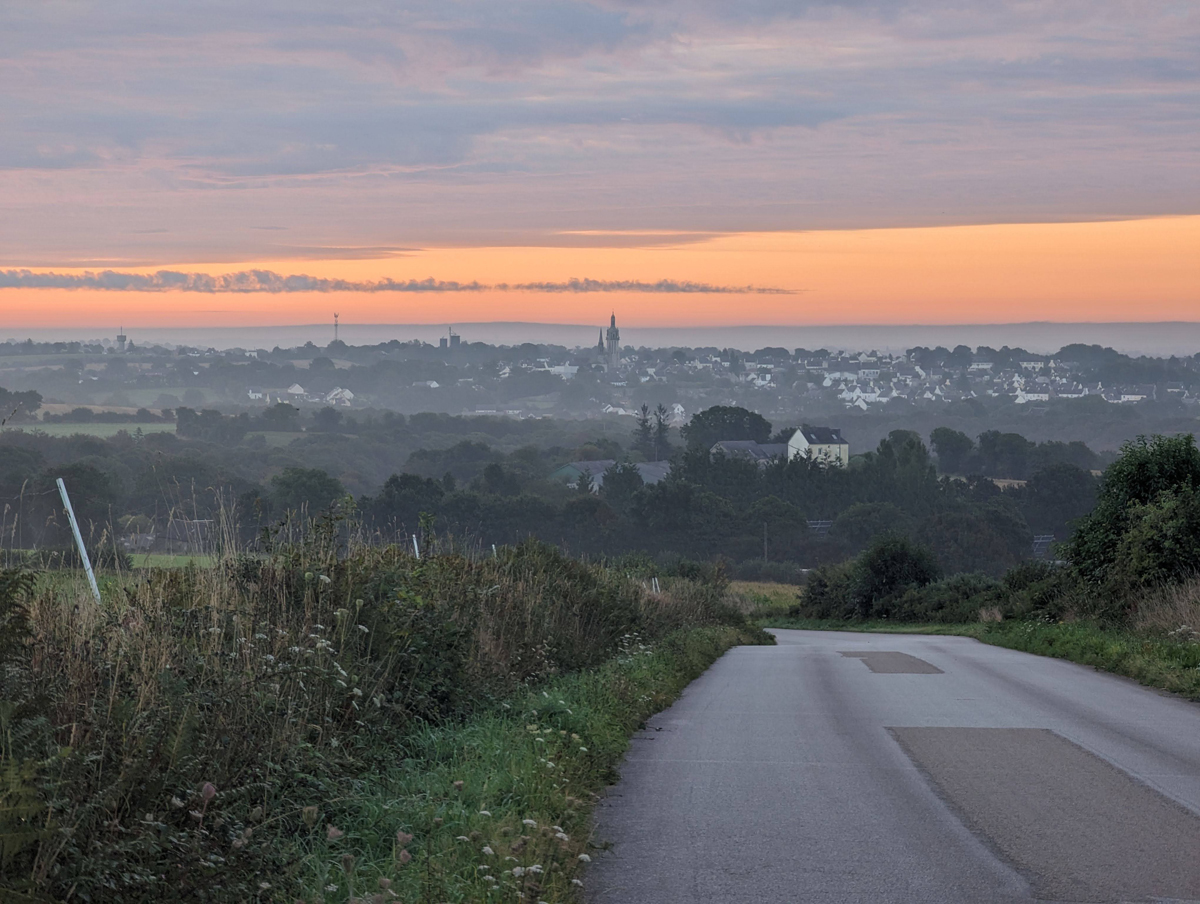
When I try to pay, I’m handed a little slip of paper with an address and asked to send a postcard. I’d completely forgotten about that! We’d found Ken’s stand. Interacting with families in their front yards in the middle of the night is definitely a joy and a reason for doing this event.
Update: As I’m writing this, I see a story in a blog by a tandem couple that I follow (link below) mention a different famous postcard crêpe stop… so maybe others had taken up the tradition of free crêpes for postcards and we hadn’t found the stop Ken had recommended, but I’m ok with that.
Intervals
We took part in early morning training intervals. It was about 6am on Wednesday. We’d been pulling 4 or 5 bikes for the last 45 minutes. The sun had come up and we were on our last couple hundred kilometers of the event. Life, although tired, was good.
A group of about 6 Frenchmen rolled up quickly behind us. One of them must have fallen asleep, forgotten his schooling, or wanted to play hijinks because instead of rolling by smoothly like they easily could have, things got a bit jumbled for a minute.
The road captain barked some orders, they got themselves organized again, and by the time they were back to making forward progress we decided… well, conscious decisions weren’t really being made anymore, but we still ended up sliding on to their wheels hoping we might get a good draft for the next little while.
For the next 30 minutes we hung on as they, in turn, attacked, and pulled, and sprinted, and surged between 40 and 45kph, and all the other inefficient moves completely inappropriate after 1000 kilometers of riding. We sat at the back as our momentum made it impractical to match all their rapid movements, but we still had the opportunity to roll around their captain when he’d been dropped and pull him back up to the tail of the pack. I think he got a kick out of that.
We bore down and hung on for one final climb (tandems CAN climb, on occasion, if the grade is just right) as a couple more of their team fell off the back. At the crest everything eased up and we all traded breathless laughs as we rolled into the checkpoint at Mortagne au Perche.
What WAS the reason for that? We may never know.
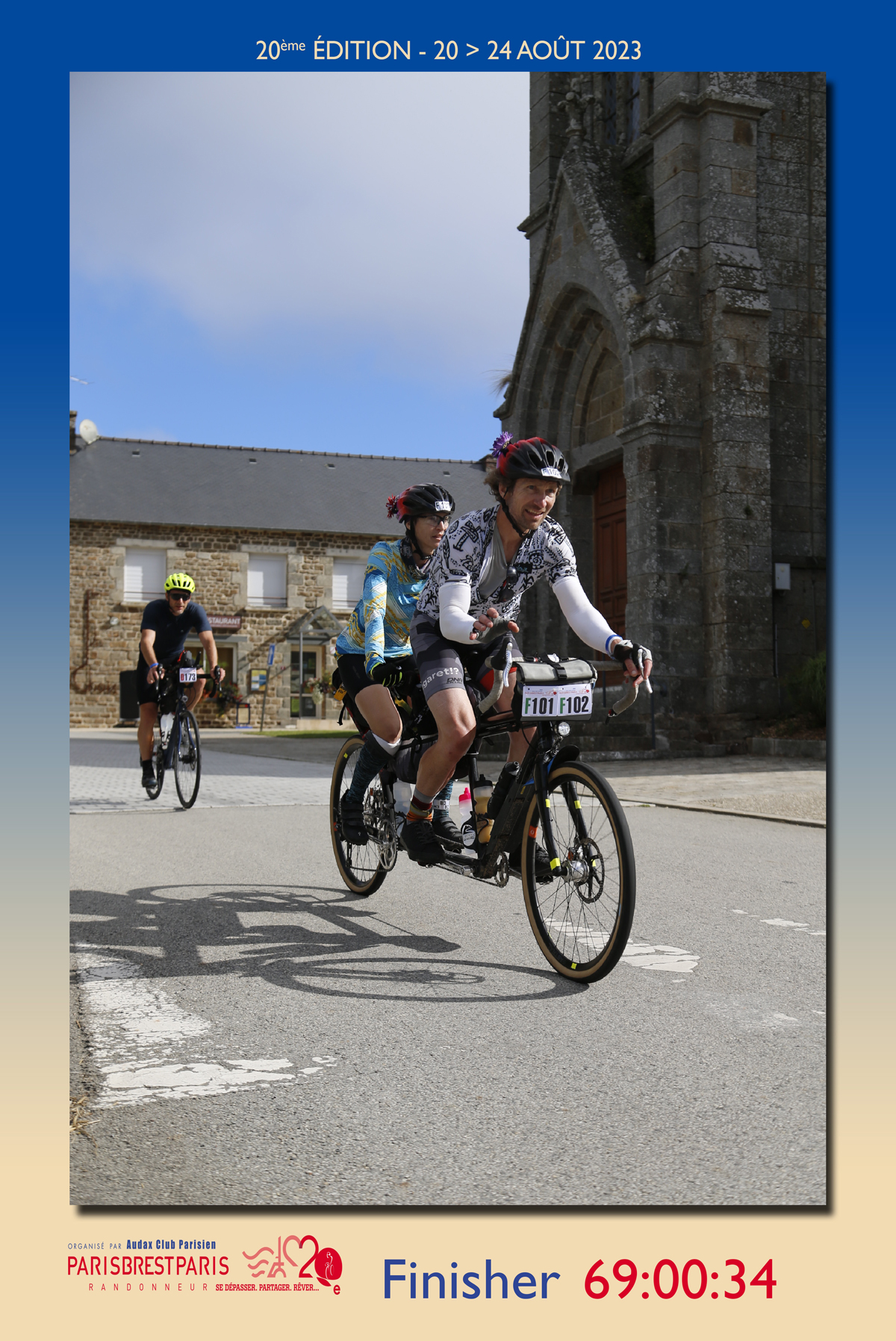
Why We’d do it Again
There are countless more recountings to be had after a ride this long. We experienced the magic of riding from one tiny French village to the next, and the next, and the next. We had fun conversations with riders from around the globe, ate many baguettes and drank many coffees and Cokes, and had plenty of time to wonder why we were doing this and why we’d likely do it again.
We finished in 69 hours and 34 seconds. That included 5 hours of sleeping in a dorm bed at the turn around control point in Brest after the first 28 hours of riding and then 42 minutes of sleeping on a bench in front of a church in Sougé-le-Ganelon at about 4 am Wednesday. We spent about 13 hours and 45 minutes eating and sitting at the various control points and two different shops that were not official stops but had fresher baguette sandwiches and pastries. Those stops were the best.
We discussed while riding that this is probably not the healthiest thing to do to one’s body. Nerve damage to hands, feet, and bums can result from this much riding induced sleep deprivation. We discussed how touring is likely a better way to visit new lands, with longer eating breaks and setting up camp for relaxed evenings. We also discussed how it’s quite possible the visiting of all the new lands makes the pain more bearable and the pain makes all the geographic and social interactions more memorable. Maybe this is the reason 39,722 have taken part in this event since its inception and why randonneuring has such a dedicated membership worldwide.
This event, not to mention a trip to Europe, had been on Amy’s and my radar for years. It finally happened and was all we hoped for and more. The preparation for a ride of this grandeur, not to mention preparing for an overseas vacation, made this entire year one we will never forget. Thank you for reading along as I get to recount these amazing memories. Now go search for some memory making events of your own.
In search of info on PBP
Paris-Brest-Paris, or PBP, is a 1200-kilometer brevet that was first run in 1891. The next 4 editions were spaced out by 10 years due to the presumed stress it put on the riders’ bodies. World War II disrupted the timing a bit with the 1941 event canceled. It happened again in 1948 and then realigned with its 10-year schedule in 1951. For some reason (maybe better roads), it fell into a 5-year interval for 4 editions and has then occurred every 4 years since 1971.
While it originally started within Paris, urban growth and logistics (6749 riders started in 2023) necessitated moving the circus outside the metropolitan traffic and the ride now starts at the beautiful and sprawling chateau of Rambouillet about an hour west of the city. The course changes on occasion, but always covers the approximately 600 kilometers due west out to the port city of Brest and then turns around and heads back to Rambouillet.
While some riders are ‘in search of a time’ (attempting to finish as quickly as they can), most are working to finish before the maximum time cutoff of 90 hours. In 2023 the first rider in was American Nicolas Dehaan who finished in an amazing time of 41 hours 46 minutes and 30 seconds. PBP is not a race and professional teams do not take part, although they have in the past.
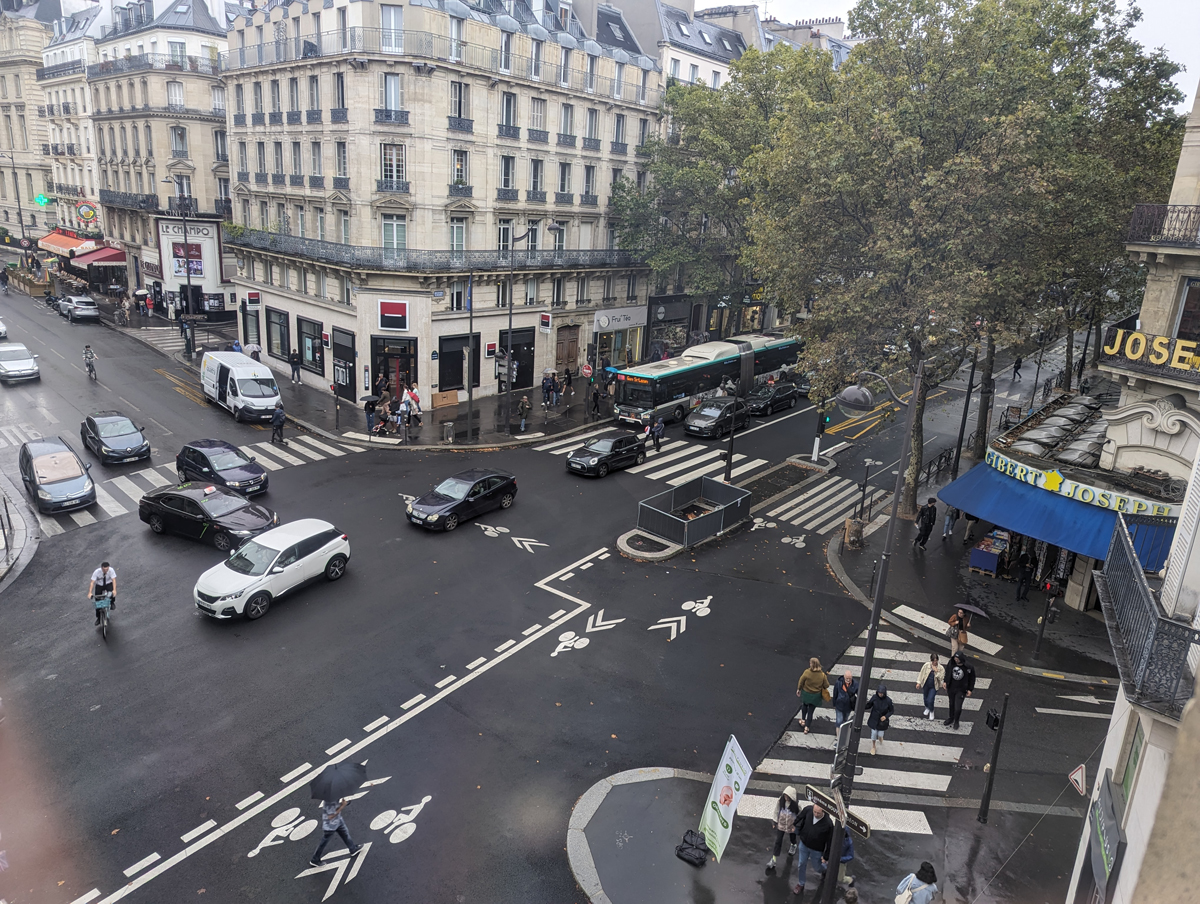
The full history of this event is fascinating, and you should search it out. I would also encourage you to track down an issue of Bicycle Quarterly No. 84 and read Jan Heine’s write-up on this same ride.
Salt Lake Randonneurs
I encourage you to investigate Salt Lake Randonneurs, the small but very friendly chapter of Randonneurs USA, administered by Ken Moss, challenge yourself to realize that 100 miles can be a short ride, and maybe even start your search for a reason to ride PBP in 2027! Amy and I know we’ll be searching for one.
In search of the Parisian cycling scene
The French love bicycles. You’ve likely watched at least brief clips of the fans at le Tour de France. You’ve seen plenty of French bicycle art or wine bottle labels. We experienced it to our bones when families and bar patrons would cheer us riding through their sleepy village at hours suitable for neither roosters nor owls.
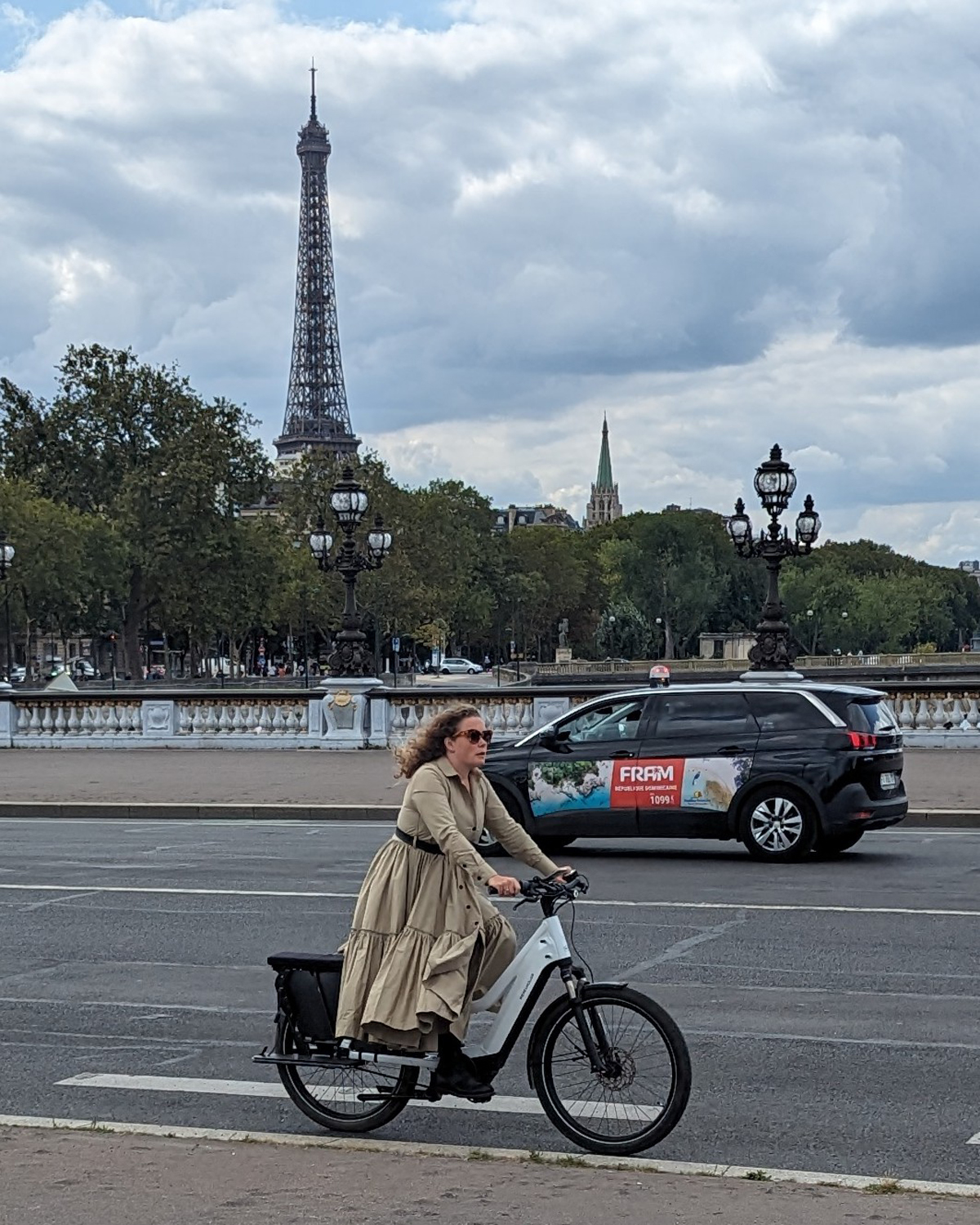
Paris, however, is a large metropolitan city with business to conduct and plenty of people with places to be. The streets are narrow and decidedly not laid out on a logical Utah grid system. Like the language, street navigation was entirely foreign to us.
Also like the language, watching and listening to Parisians navigate the streets was like watching art. A horn honk serves a purpose: “Excusez moi. Move forward 6 inches so I can move my tail out of this intersection so the 3 other directions of traffic may pass through, s’il vous plaît.” Merging cars, scooters, bicycles, and pedestrians were an exquisitely choreographed dance.
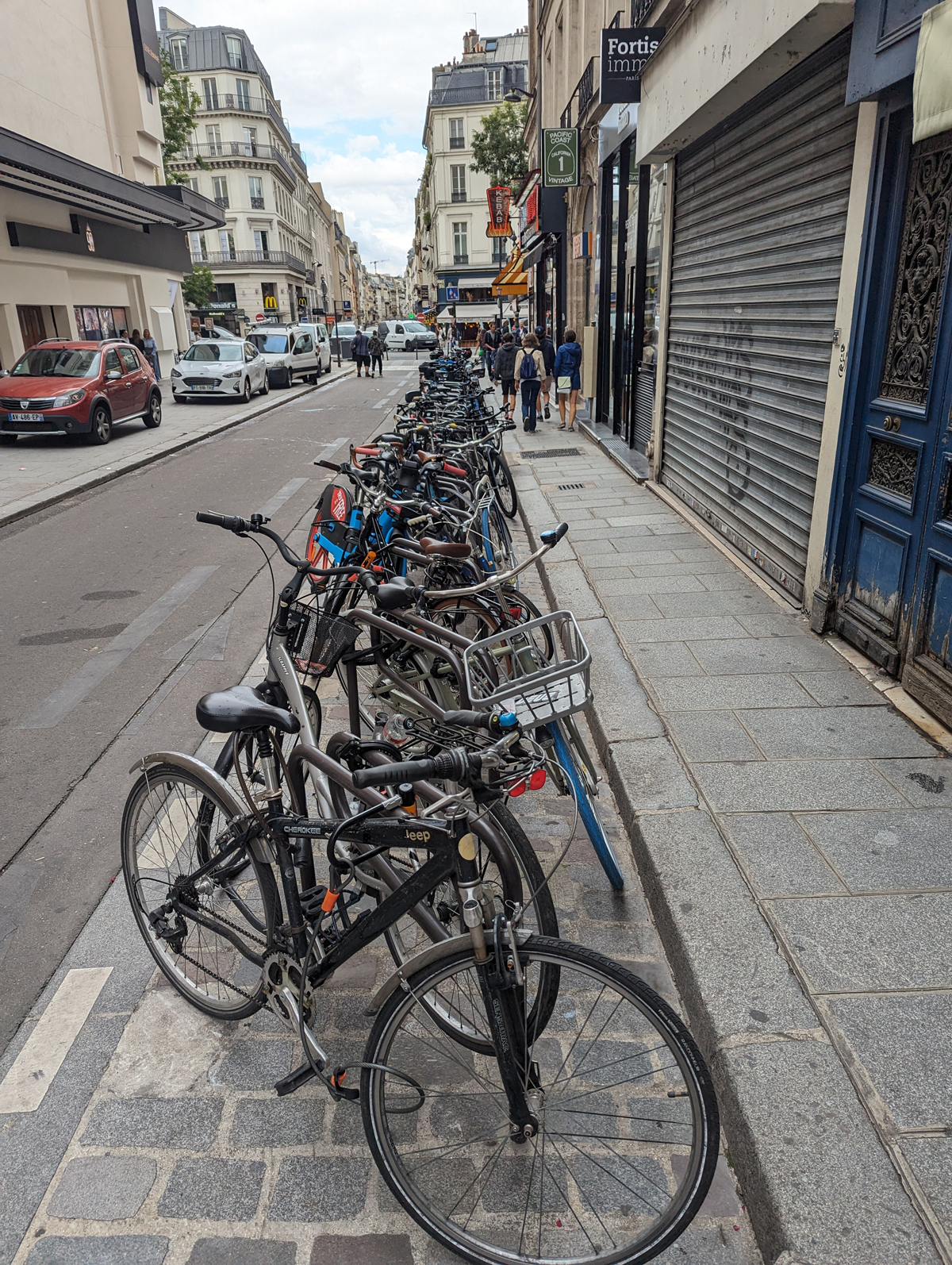
An entirely integral part of this orchestrated and choreographed cacophony was the bicycle. Business dressed, parents w/ 2 kids, errand runners, and presumably plenty of tourists either more experienced or braver than I, were omnipresent.
For the past few years, the city of Paris has been on a mission to increase bikeability. More dedicated bike lanes. More controlled intersections. More bike share bikes. More bike parking. Bicycles filled the separated bike lanes, utilized the narrow streets, riding both directions, and on both sides of traffic on one-way streets, pulling up in front of cars at lights, never on sidewalks, never getting honked at. It was impressive to see, and it seemed to work!
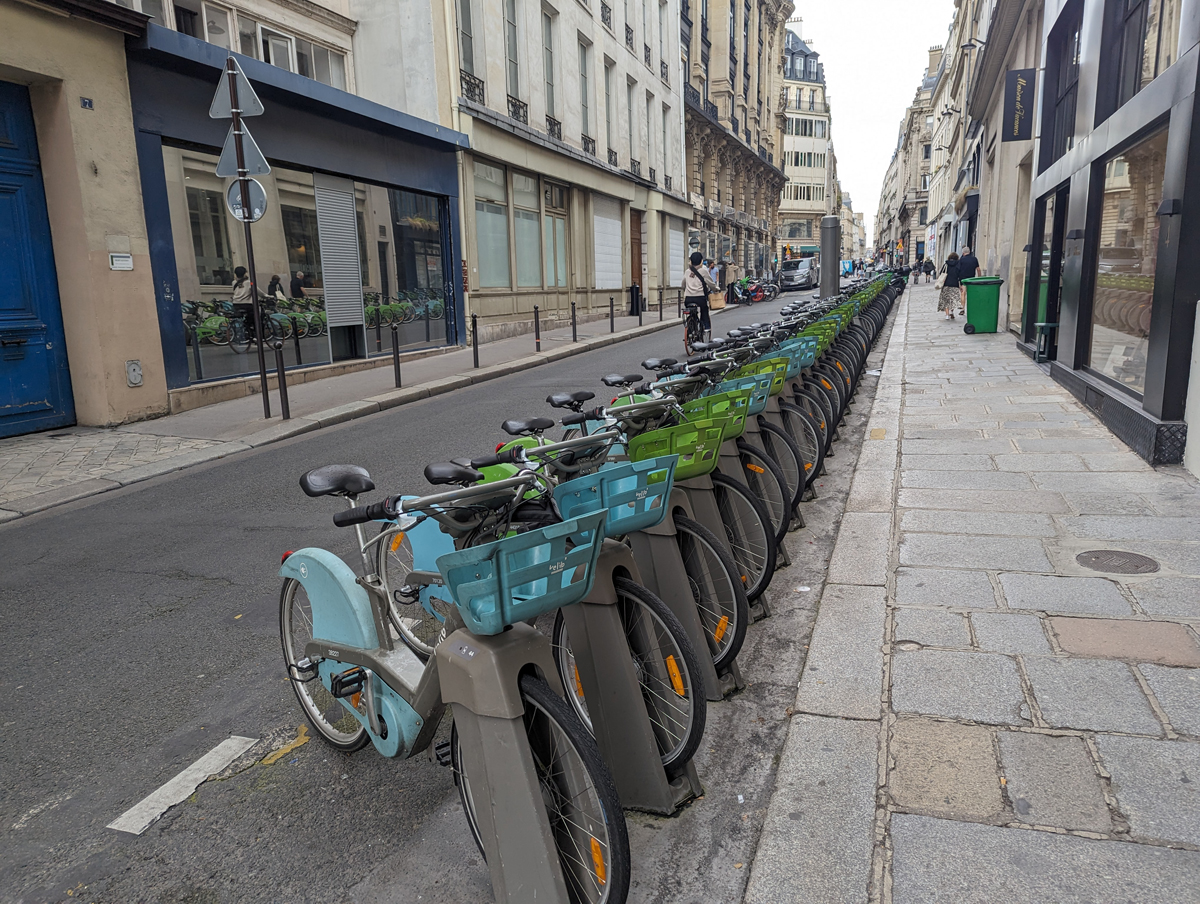
It should be noted that our taxi driver told us there were, indeed, many accidents in Paris, but we didn’t see any. I should say that we did ride a few kilometers on bike-share rides during our stay and it scared the digested pain out of me, but it was still beautiful to watch and with some practice, I think I would enjoy it more than riding on Beck St north of SLC.
Resources:
- https://www.bloomberg.com/news/articles/2021-10-22/how-paris-will-become-100-cyclable
- https://rusa.org/pages/PBP-short-history
- https://www.pbpresults.com/
- https://thedailyrandonneur.word-press.com/2023/09/02/pbp-2023-on-tandem-trusting-the-plan/
- https://www.saltlakerandos.org/

